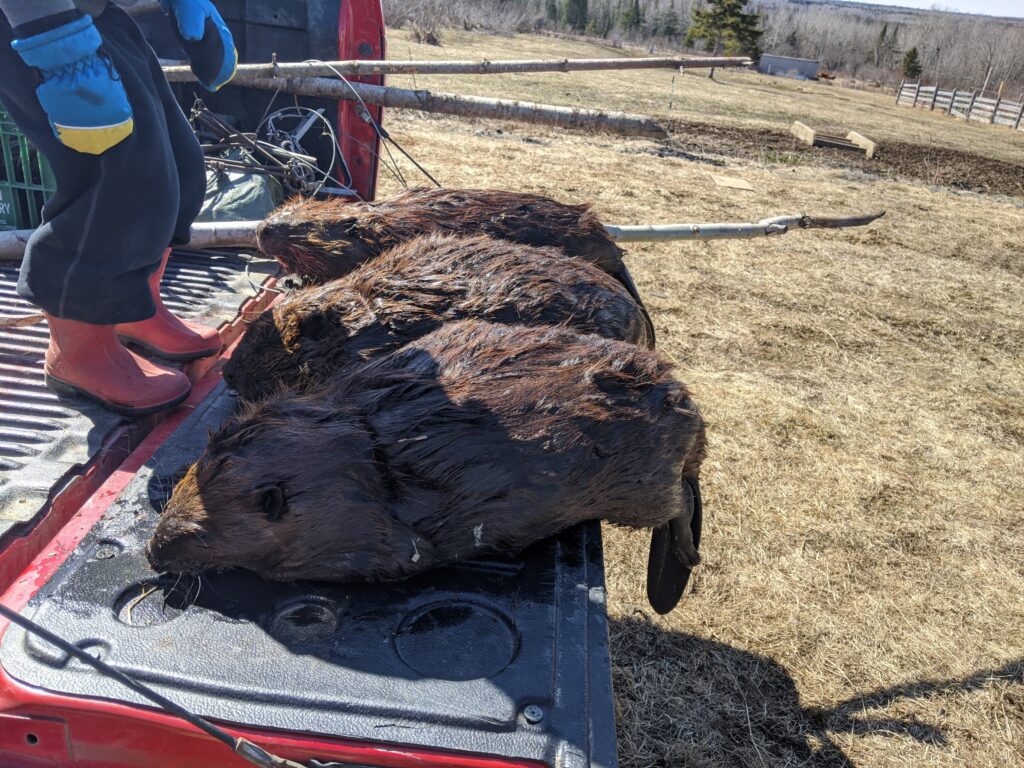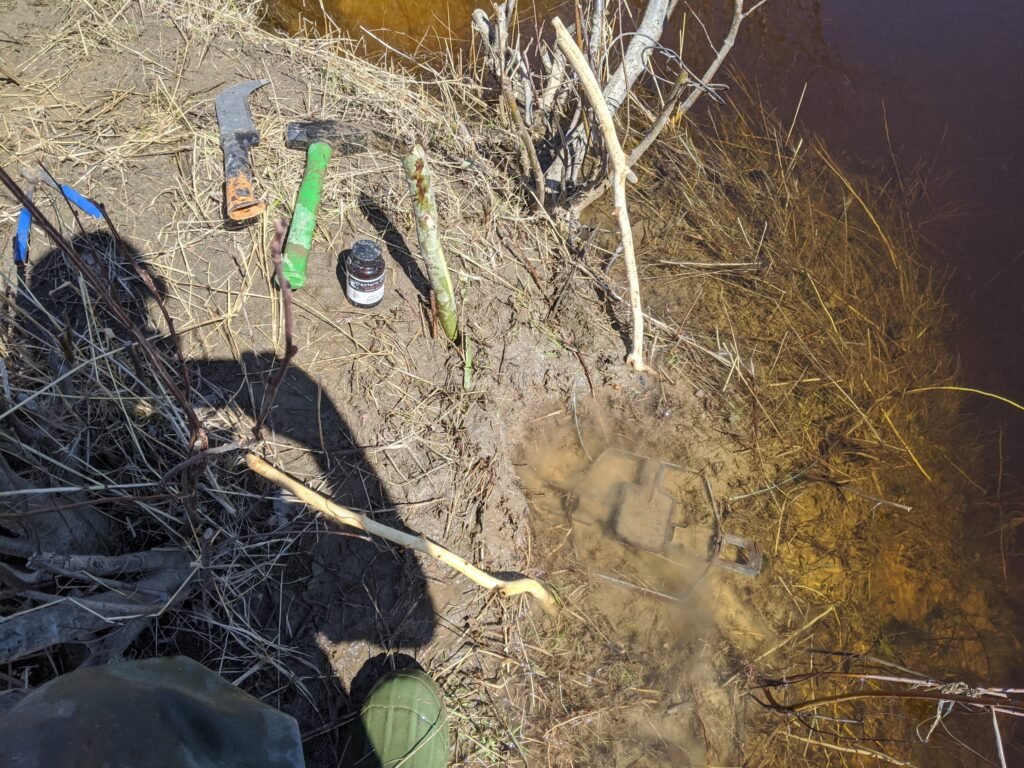
Whether you’re looking to catch a single problem beaver, harvest a few beavers for their fur or meat, or trap large numbers of the rodents, using the right bait is critical to beaver trapping. Like many semi-aquatic animals, beavers feed on a variety of food sources and not all are created equal. In addition, the type of vegetation a beaver prefers can vary depending on location and availability. Let’s take a look at some of the different bait options beaver trappers have in North America.
Aspen – Overall, I would rate quaking aspen as the best bait to use for beaver trapping in northern parts of the United States and throughout Canada. Also locally referred to as ‘poplar’ or ‘popple’, aspen has a soft bark and distinct smell and flavor. It also has a very high visual appeal when the bark is partially scraped away to reveal the white wood portion at a trap set. Aspen grows in northern latitudes and high elevations, and likes moderately wet soil (not too dry or wet). The trees grow in groves or patches which are often close to the water but not in saturated soil. Beavers will regularly travel upland short distances from their ponds or other aquatic habitat to reach aspen trees and bring them to the water to feed or store for winter. In my northern Maine trapline, I’ve tested multiple species of trees to use as bait for beavers and aspen has always outperformed every other bait. Bigtooth aspen is very similar to quaking aspen and seems to perform just as well for beaver bait, but is typically more difficult to find and present in more upland areas away from water.
Poplar/Cottonwood – A number of similar tree species fall under the general category of poplar or cottonwood. Some examples include Balsam poplar, which is more northerly distributed, while the different types of cotttonwood have a wider distribution throughout the United States. The poplar species most common in my northern Maine trapline is Balsam poplar, which locals refer to as ‘balm of Gilead’. These and similar species in the genus Populus are excellent bait for beaver trapping. They don’t seem to be quite as attractive as quaking aspen in my area, but are a close second and will be readily eaten by beavers where available.
Willow – different varieties of willow grow along the water’s edge in most places where beaver are found. Beaver will readily eat willow and it can be a good bait when beaver don’t have better options like aspen.

Hardwood – Beaver love hardwoods like maple and birch, but don’t feed on them often in most areas because these trees usually don’t grow close to the water. In places where hardwood uplands are flooded by beaver flowages, you’ll see numerous cuttings of these trees. Birch is particularly attractive, which is why birch oil is an excellent component of beaver lure (example here). When used as bait, however, hardwood isn’t always the best because it sours quickly, losing its fresh flavor, and the ‘white’ portions of cut wood with bark removed become discolored pretty quickly relative to other trees. That said, birch, maple and similar species can make great bait for beaver trapping if you don’t mind checking and changing the bait often.
Dogwood – Red ozier dogwood is a small, red-barked bush that is often found growing in old fields and meadow areas. I have seen numerous places where beavers have fed on dogwood and have used it successfully for bait in the past, but its small size makes it difficult and ineffective to use for bait in many situations.
Alder – alder is one of the most common species growing near beaver flowages, and it’s often seen cut off near the water, causing some to assume beaver are feeding on it. In most cases, that’s not what’s happening. Beaver are usually using alders to construct their dams and houses. Alder makes a terrible bait for beaver, and in my experience they only eat it when absolutely nothing else is available.
Pond Lilies – In some places, mostly swamps where woody vegetation is very limited, beavers will live almost entirely on pond lilies throughout the winter. They seem to dig these out of the banks and off the bottom of ponds. They seem to focus on eating the roots. Although beavers will eat pond lilies, they don’t make a very good bait and aren’t really feasible to collect and use when trapping.
Beavers live in a variety of habitats throughout their range, and food availability differs widely depending on where they’re at. As a result, they are very adaptable in what they will eat, and the best bait for beaver trapping can differ by region. There are a lot of potentially effective baits not mentioned above. That being said, the best overall bait for beaver is still probably aspen, followed by different species of poplar and willow. So if you have any of those species, use them! And as always, it’s a good idea to try a different variety of baits to see what works best on your trapline.
Do you have experience beaver trapping with baits other than what’s mentioned above? Feel free to add your suggestions in the comments!
Very good article. I have a couple of flows where they live entirely on water lillies roots. I use peeled potatoes there for bait.
Thanks Alan. Potatoes are a good suggestion!!
I am having problems with beavers eating my fruit trees. I live by a small lake. It seems to me that they like peach trees the most. I am going to get some live traps and bait them with peach branches hopefully this will work.